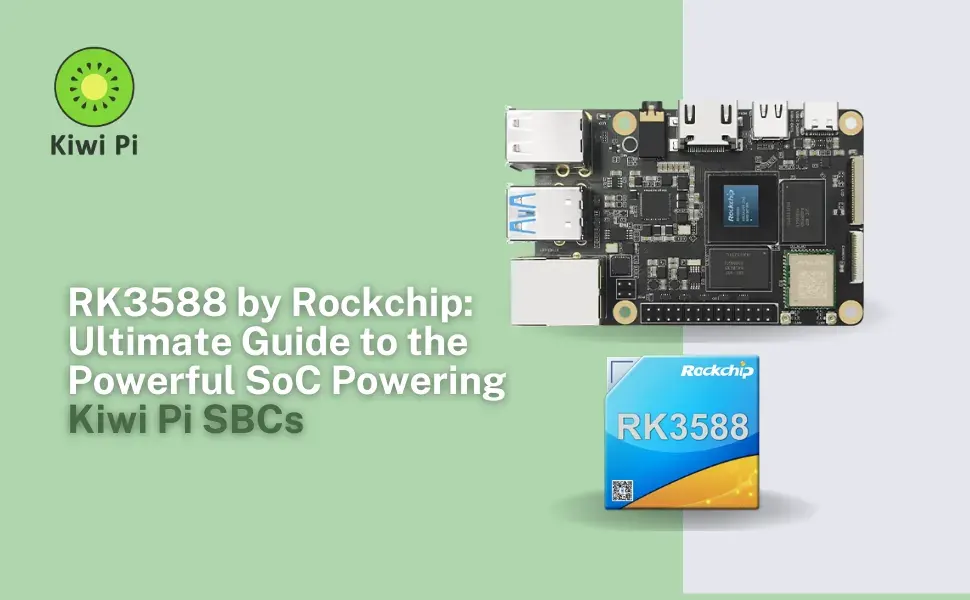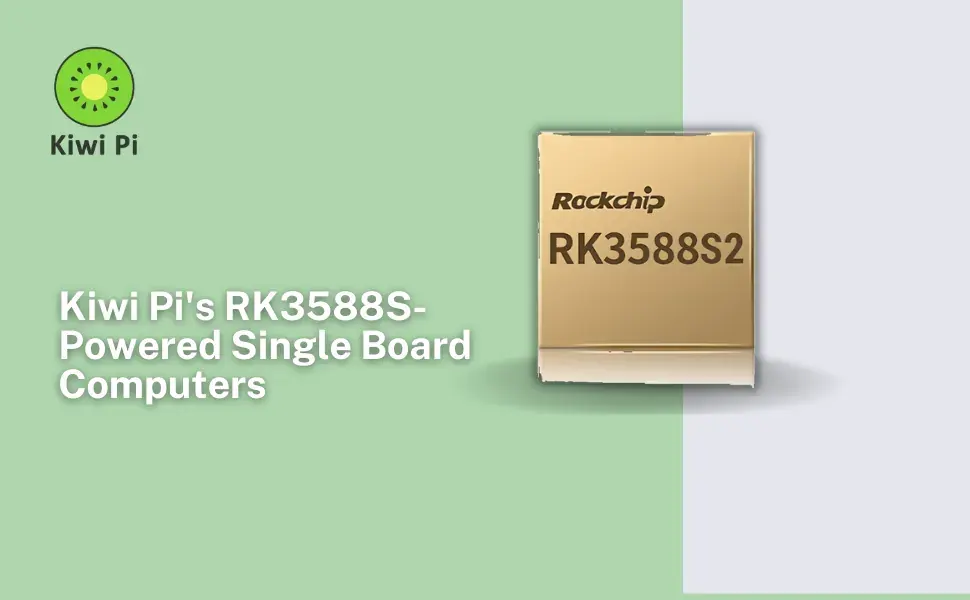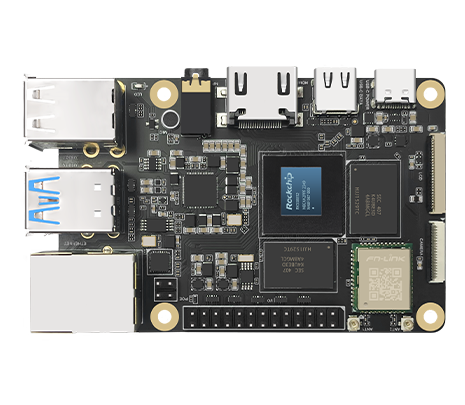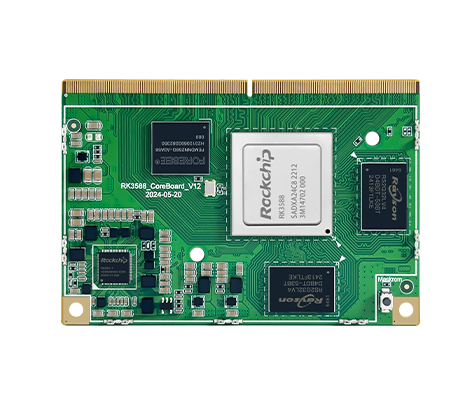
Articles
RK3588 by Rockchip: Ultimate Guide
The Rockchip RK3588 represents a significant leap forward in system-on-chip (SoC) technology, offering exceptional performance for AI-powered applications, edge computing, and multimedia processing. As one of Rockchip's flagship processors, the RK3588 delivers desktop-class performance in an energy-efficient package. At Kiwi Pi, we've harnessed the power of the RK3588S variant in our premium single board computers including the Kiwi Pi 5, Kiwi Pi CM5, and Kiwi Pi 5 Ultra series, bringing professional-grade computing to developers and enthusiasts alike.

RK3588 Technical Specifications and Architecture
The Rockchip RK3588 is built on an advanced 8nm process technology, balancing power efficiency with high performance. Let's examine its impressive technical specifications:
CPU Configuration
The RK3588 features a big.LITTLE octa-core CPU configuration:
4x ARM Cortex-A76 cores @ up to 2.4GHz (performance cluster)
4x ARM Cortex-A55 cores @ up to 1.8GHz (efficiency cluster)
8MB L3 cache for improved multi-core performance
Support for ARM DynamIQ shared unit technology
GPU and Multimedia Capabilities
The integrated ARM Mali-G610 MP4 GPU delivers exceptional graphics performance:
OpenGL ES 3.2, OpenCL 2.2, and Vulkan 1.2 support
4K@60fps video decoding for H.264, H.265, VP9, and AV1 formats
8K@30fps video decoding capability
Dual-channel 4K@60fps video output
Memory and Storage
The RK3588 supports cutting-edge memory and storage options:
LPDDR4/LPDDR4X/LPDDR5 support up to 32GB
eMMC 5.1, SPI Flash, NAND Flash interfaces
PCIe 3.0 interface for high-speed NVMe SSDs
Multiple USB 3.1/2.0 ports for expandable storage
RK3588 vs Competing SoCs: Performance Comparison
How does the Rockchip RK3588 stack up against other popular processors in its class? Let's examine the key differences:
| Feature | RK3588 | RK3399 | Raspberry Pi 4 (BCM2711) | NVIDIA Jetson Xavier NX |
|---|---|---|---|---|
| Process Node | 8nm | 28nm | 28nm | 12nm |
| CPU Cores | 8 (4xA76 + 4xA55) | 6 (2xA72 + 4xA53) | 4xCortex-A72 | 6-core Carmel ARMv8.2 |
| GPU | Mali-G610 MP4 | Mali-T860 MP4 | VideoCore VI | 384-core Volta |
| Max Memory | 32GB LPDDR5 | 4GB LPDDR4 | 8GB LPDDR4 | 8GB LPDDR4x |
| AI Acceleration | 6 TOPS NPU | None | None | 21 TOPS |
| Video Decode | 8K@30fps | 4K@60fps | 4K@60fps | 2x 4K@60fps |
The RK3588 clearly stands out with its advanced 8nm process, superior CPU configuration, and impressive multimedia capabilities. While the NVIDIA Jetson Xavier NX offers more AI performance, the RK3588 provides better general-purpose computing at a more accessible price point.
Applications and Use Cases for RK3588-Powered Devices
The Rockchip RK3588's versatile architecture makes it suitable for a wide range of applications:
AI and Edge Computing
With its 6 TOPS NPU and powerful CPU/GPU combination, the RK3588 excels at:
Real-time object detection and recognition
Natural language processing applications
Industrial automation and quality control
Smart city infrastructure
Multimedia and Digital Signage
The RK3588's advanced video processing capabilities enable:
8K video playback and processing
Multi-screen digital signage solutions
Professional video conferencing systems
High-end media centers
Embedded Systems and IoT
RK3588's rich I/O and processing power make it ideal for:
Industrial control systems
Network appliances and firewalls
Medical imaging devices
Robotics and automation
Kiwi Pi's RK3588S-Powered Single Board Computers

At Kiwi Pi, we've developed a series of high-performance single board computers based on the RK3588S variant of this powerful SoC. Our products bring professional-grade computing to makers, developers, and businesses:
Kiwi Pi 5 Series
The flagship Kiwi Pi 5 combines the RK3588S with premium features:
Up to 16GB LPDDR4X RAM
Dual 4K HDMI output @60Hz
Gigabit Ethernet + optional WiFi 6
Multiple USB 3.0 and USB 2.0 ports
PCIe expansion for NVMe storage
Kiwi Pi CM5 (Compute Module)
Our compact compute module solution offers:
RK3588S in SODIMM form factor
Up to 32GB LPDDR4X memory
Support for eMMC up to 128GB
Ideal for custom carrier board designs
Kiwi Pi 5 Ultra
The ultimate RK3588S development platform features:
Enhanced power delivery for sustained performance
Advanced cooling solutions
M.2 slots for NVMe and AI accelerators
Industrial temperature range support
According to our datasheet, all Kiwi Pi RK3588S-based boards support mainline Linux distributions including Debian, Ubuntu, and Android 12, providing developers with a flexible software ecosystem.
Conclusion: Why RK3588 is a Game-Changer
The Rockchip RK3588 represents a significant advancement in SoC technology, offering desktop-class performance in an energy-efficient package. With its octa-core CPU, powerful Mali-G610 GPU, 6 TOPS NPU, and advanced multimedia capabilities, the RK3588 is well-suited for demanding applications ranging from AI processing to 8K multimedia. The RK3588S variant used in Kiwi Pi's single board computers brings these capabilities to developers and businesses in accessible form factors.
Key advantages of the RK3588 include:
Superior performance per watt compared to previous generations
Comprehensive multimedia support including 8K video
Built-in AI acceleration for machine learning applications
Extensive connectivity options for versatile deployment
Robust software ecosystem with mainline Linux support
Whether you're developing advanced AI applications, building multimedia systems, or creating industrial automation solutions, the RK3588 and its implementation in Kiwi Pi's single board computers provide the performance and flexibility needed for next-generation embedded computing.

